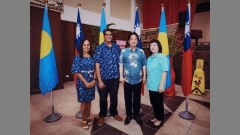How I Got Hired: Senior Interpreter and Translator, Ministry of Foreign Affairs of the Republic of China (Taiwan)
| by Wanshan “Pearl” Lin MATI/MAIPS ’96
Translation and Interpretation graduate Wanshan “Pearl” Lin shares how faculty mentorship and career advice helped her launch a career as an interpreter.




